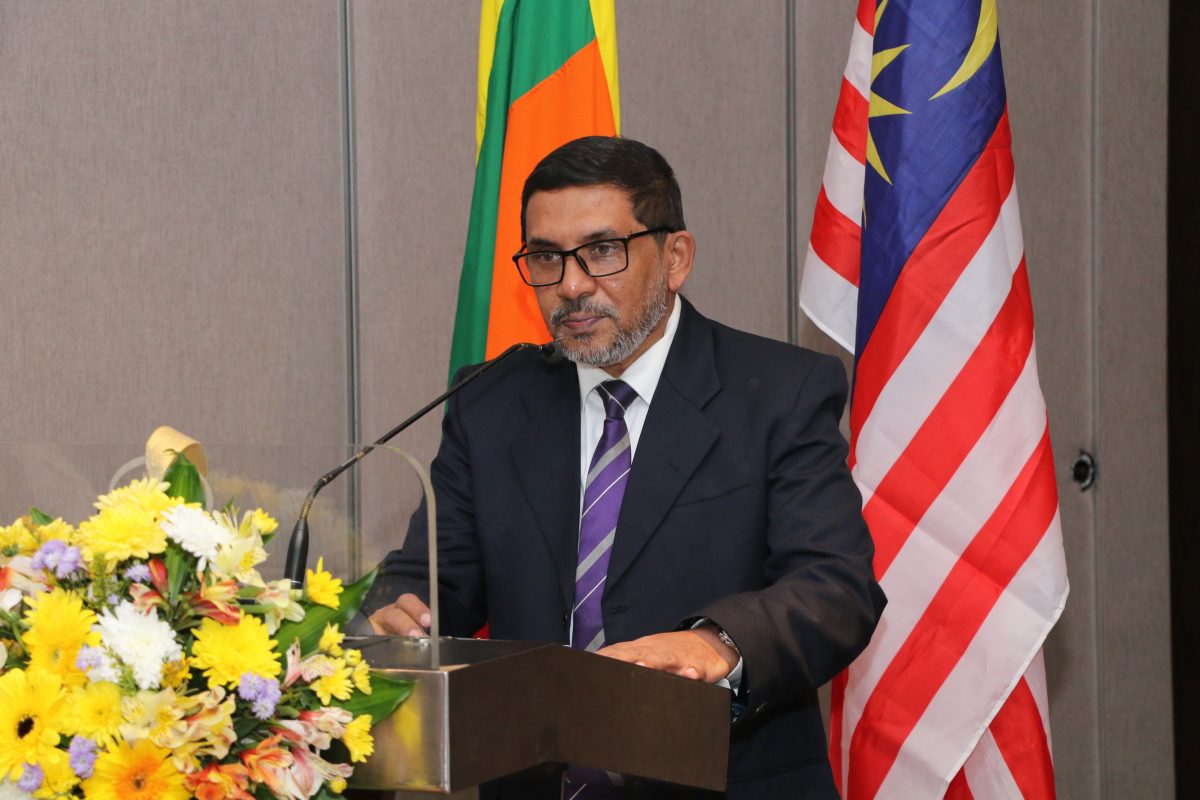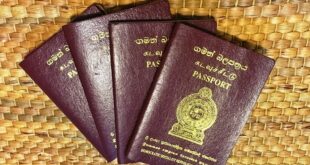
The Chartered Institute of Logistics and Transport Sri Lanka (CILT) in a statement issued yesterday congratulated the Road Development Authority on the completion of the Southern Expressway, the country’s first, and highlighted several safety issues the public should not ignore when using the highway.
"This super highway experience will be new to Sri Lanka, and we expect that it will benefit the country and its users in a number of ways. Firstly, it will permit faster speeds up to 100 km per hour enabling shorter travel. Secondly, the roadway in allowing only limited entry and exit at selected localities will enable undisturbed free-flow of traffic and potentially fewer accidents unlike on other surface roads in Sri Lanka. Next, the relatively well aligned trace, pot-hole free surface and smoother travel will save both time and fuel. A further benefit we note is that by nature of its design that the highway will be protected from encroachment and unplanned constructions which are not only an eye sore but a reason for accidents and congestion on other roads in the country," the CILT said.
"It is also noted that the new highway will bring about development of that part of the country including eco tourism, agricultural based industries and manufacturing industries. It will also bring communities closer to each other. Therefore, the Southern Highway, the newest member of the highway network of Sri Lanka, can be considered to be an important initiative and its accelerated implementation, subsequent to decades of delays and hiccups, is commendable, despite its heavy toll on the public coffers.
Culture of Safe Driving
A good road design which looks safe requires all drivers to be more careful as they can be made to feel secure when it is actually not. Even though a road looks safe, if the drivers are not disciplined and skillful, it will be equally unsafe and the consequences of unsafe driving much severe. Thus drivers must match the safety with which they drive to that of the road design. This is called a road safety culture. This must be established. The culture that prevails on the normal roads must not be allowed to enter the expressways. Accidents on expressways tend to involve multiple vehicles and heavy fatalities.
CILT Sri Lanka has noted the recent media publicity on the features of the highway and some safety concerns that have been raised in several quarters. We have brought these to the attention of the relevant officials in order to suggest how such risks may be minimised so that the expected goodwill and benefit from the highway will be enjoyed by the people of the country. As no noteworthy response has been forthcoming, we now wish to make the public aware of the dangers that face them and what could be done to avoid such.
Narrow Lanes and Budget Cuts
Due to budget overruns and changes to design, the lane width has been reduced to 3.5m. This is less than the International norm of 3.7m. The reduced lane width does not allow safe overtaking at higher speeds, especially when the flow is high and there are large vehicles.
Start with Lower Speed
Given that most drivers in Sri Lanka have not driven on expressways and that most vehicles have not been used in such facilities, controlling speed is the single most effective tool to ensure a smooth and safe start to the facility. Drivers must get used to a number of new driving attributes such as high speed lane changing, merging and diverging at interchanges, sudden braking, maintaining lane control, over-takings, handling stationary objects when moving at high speed, avoiding collisions among other vehicles, management of headways etc. Most of these tasks become increasingly risky with speed. The level of risk at 100 km per hour will be more than double that at 80 km per hour. Our recommendation is to open the highway at 80 km per hour and to undertake a safety study during this time before increasing it to 90 and then to 100 km per hour.
Phased entry of Heavy Vehicles
The benefits of the new highway should be enjoyed by all motorists. However, knowing the attraction that a highway of this nature will have on our people, it is likely that the highway will begin with sight seers and thrill seekers who may pose a major threat on safety management. These vehicles are usually vans and hired buses and an accident involving one of them could result in a high toll on human life. It is therefore our recommendation that the access to this highway be initially restricted to vehicles registered as cars and dual purpose vehicles which will carry only the allowed number of passengers as per registration. Moreover only vehicles having seat belts, good quality tyres, lights and generally in good appearance of being road worthy should be allowed to enter. This will also make the numbers that should be given user awareness manageable. It could then be opened for buses and trucks.
Where to stop? Insufficient Width of Hard Shoulder
Media reports and pictures of the highway have raised concerns that the hard shoulder available for emergency stopping of vehicles is less than what should be allowed for an expressway that allows 100 km per hour vehicles. Parking of a car or van and opening a door would require at least 2 ½ metre width and a heavy vehicle more than that. We have been advised that this is only 1.75 metres and can only be termed a ‘budget- expressway’ as it does not allow full expressway features. A car developing a mechanical fault may be able to just get out of the traffic lane. But its occupants cannot open a door. If indeed this width has not been provided it is a grave concern how such situations can be safely handled. It is interesting to ascertain if vital safety features have been compromised in design and cost cutting. If indeed the width is inadequate, some re-adjustment of lane widths and if that is not possible now, of speeds may have to be undertaken. CILT Sri Lanka wishes to emphasise that road safety should never be compromised for speed or cost.
Enforcement
Even though the Police have been given powerful vehicles to enforce speed limits, it will be of much interest to know how they would stop such a vehicle on the side. Would they have to follow such a vehicle out of the next exit? This would be most unsatisfactory. Moreover, the expressway does not seem to have any locations where Police could stay to detect speeding or other offences.
When His Excellency has declared a decade of road safety, the first world class expressway the country boasts should not be found to be compromising in safety.
Adherence to rules and traffic regulations by the users should be strictly monitored by the enforcement agencies, including the Police, Department of Motor Traffic and the Road Development Authority. Unlike in many other areas where we have seen slackness in law enforcement, any lacuna in enforcement with regard to the usage of Expressway is sure to yield catastrophic consequences. The Southern Expressway bears an added responsibility in this regard as its experience stands to set precedence for all future expressway usage in Sri Lanka. Therefore, it is the earnest call of the CILTSL that the laws be strictly enforced with respect to the usage of Southern Expressway regardless of the status or creed of the errant.
User awareness
While the media publicity that is currently given is most valuable and commendable, potential drivers should also be given a suitable hands-on training at least in the form of a 10 minute instruction in the vehicle itself just before they get on the expressway. They could then be given a paper certificate then and there which they can show when they wish to use the facility again. This could be handled by training some police officers or engaging some driving instructors after they themselves are allowed to drive and learn on the highway. This will be a valuable exercise that will yield much more benefit than the cost and effort involved. This will mean that passengers in the vehicle also are made aware. Limiting initial vehicle categories will make this achievable.
Users should understand that at high speed, a lapse will result in terrible tragedies that could be very serious and involve many vehicles and lives. Drivers must slowly learn the fine art of smooth merging and diverging at ramps. The ramp entry and exit maneuvers are likely to be difficult for drivers who have not used these before. The vehicles on the expressway should give way to entering traffic. It is necessary to establish correct pattern for this before allowing large numbers to use these. If not, bad practices will become the norm and difficult to change not only in the Southern Expressway but also on the others in future. Drivers should also be made aware how to handle emergencies when travelling at high speeds, such as tire blow outs, bird strikes, engine and brake failures. The latter is particularly important for large vehicles.
Maintenance and Toll Payment
The maintenance of high speed roads should be a priority task. We do not see the current roads being maintained in this manner. There is no culture of giving priority for maintenance of roads. The usual practice is that once a road is constructed, funds are not prioritised for maintenance. Moreover, remedial action is often delayed making the road dangerous, slow and costlier to repair. In this respect we would welcome the payment of a toll that would at least provide for regular operation and maintenance of this highway without burdening the non-users. However it is important that it is computed on sound economic terms and on the basis of "user pay" principles so that motorists – know and pay for the cost of the infrastructure they use.
The Chartered Institute of Logistics and Transport in Sri Lanka, the leading professional institute for transport in Sri Lanka, wishes that the authorities will take necessary action to ensure safety on the Southern Highway before it is opened for traffic. It also wishes to remind the general public of their duty to call for rightful and prompt action of the authorities to ensure public safety."
Post Disclaimer | Support Us
Support Us
The sailanmuslim.com web site entirely supported by individual donors and well wishers. If you regularly visit this site and wish to show your appreciation, or if you wish to see further development of sailanmuslim.com, please donate us
IMPORTANT : All content hosted on sailanmuslim.com is solely for non-commercial purposes and with the permission of original copyright holders. Any other use of the hosted content, such as for financial gain, requires express approval from the copyright owners.

 Sri lanka Muslims Web Portal Sri Lanka Muslims News Center
Sri lanka Muslims Web Portal Sri Lanka Muslims News Center



